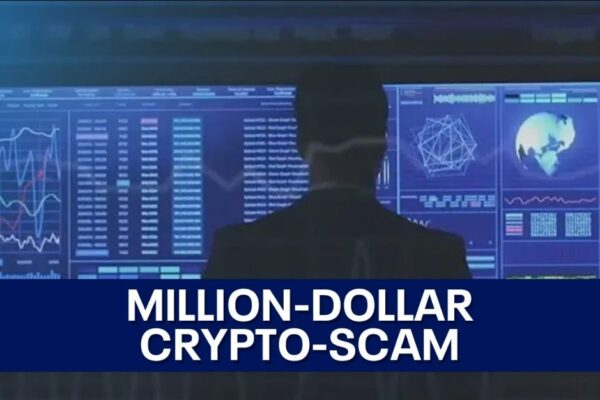Marketplace.io Scam Review -Next-Gen Trading Illusion
In the world of online investing, it’s easy to get caught up in the shine of innovation. Every month, a new “game-changing platform” claims to offer faster trades, smarter algorithms, and guaranteed profits. Marketplace.io is one such name that’s been making waves lately — but not for the right reasons.
While the branding suggests a sleek, forward-thinking digital exchange, a closer look reveals something entirely different: a web of deception, manipulation, and hidden traps designed to exploit unsuspecting traders. In this review, we’ll dissect Marketplace.io from top to bottom — exploring how it operates, how investors get drawn in, and what red flags expose its true intentions.
The First Impression: A Masterclass in Misdirection
At first glance, Marketplace.io presents itself as a futuristic trading ecosystem — boasting features like AI-driven analytics, lightning-fast execution, and “institutional-grade” liquidity. The site design is crisp, the tone confident, and the promises endless.
But here’s the thing: scammers have learned that legitimacy starts with appearance. Professional branding and buzzwords aren’t signs of reliability; they’re bait. Marketplace.io’s interface is crafted to trigger trust — offering just enough realism to seem credible but never enough transparency to verify anything.
The homepage reads like a pitch deck for Silicon Valley investors:
“Harness the power of next-generation trading technology to multiply your portfolio.”
Sounds impressive. But what’s missing? Any mention of who’s behind it, where it’s registered, or which financial authority regulates it. That silence isn’t an accident — it’s a strategy.
Behind the Curtain: Who Actually Runs Marketplace.io?
Transparency is the backbone of legitimate trading operations. Every licensed exchange discloses ownership details, business registration, and a regulatory license number. Marketplace.io, on the other hand, hides behind vague corporate jargon and fake legal entities.
Several users report that when they inquired about regulation, the “support team” offered evasive answers — often claiming compliance with “global financial standards” without citing any actual regulator. Some even received digital documents with fabricated registration numbers, giving the illusion of legitimacy.
Further research reveals no verified business filings, no registered financial oversight, and no identifiable corporate address. The site’s contact information leads to unresponsive email addresses or “live chat” operators who vanish the moment you ask difficult questions.
That’s not oversight — that’s orchestration. Marketplace.io appears engineered to mimic legitimacy just long enough to gain trust before vanishing when accountability arises.
The Hook: How Victims Are Drawn In
Scams like Marketplace.io are psychological operations as much as financial ones. Their marketing strategies target emotion before logic. Here’s the typical sequence that traps victims:
-
The Discovery Phase:
Prospective traders stumble across Marketplace.io via aggressive social media ads, fake YouTube testimonials, or affiliate marketing blogs touting unbelievable returns. -
The Enticement Phase:
Users are shown flashy dashboards and “real-time” trading metrics that create an illusion of constant profit. The platform may even credit small, fake profits early on to build confidence. -
The Deposit Phase:
Once trust is built, the investor is urged to “increase capital” to unlock higher-tier benefits — like “premium AI access” or “24/7 personal account management.” -
The Trap Springs:
Withdrawals suddenly become “temporarily unavailable,” accounts are “under review,” or the platform introduces new “verification fees” that must be paid before releasing funds.
By this stage, the victim’s capital is gone — siphoned through offshore payment processors, crypto wallets, or untraceable third-party gateways.
A Closer Look at the Fake Tech Promises
One of Marketplace.io’s boldest claims is its “AI-powered trading engine” that supposedly analyzes market data to deliver near-perfect predictions. But the details stop there — there’s no explanation of methodology, no proof of algorithmic infrastructure, and no third-party audit.
This is a classic bait tactic. Scammers love invoking AI because it sounds futuristic and complex enough to discourage scrutiny. Phrases like “machine learning-driven arbitrage” or “quantum-level pattern detection” are designed to impress, not inform.
When traders tried to validate the system’s performance, most found that trade histories were inconsistent, timestamps didn’t match market data, and portfolio charts appeared pre-rendered. In short, the “AI system” was little more than a scripted animation — a digital puppet show built to convince users their money was actively working for them.
Fake Reviews and Influencer Endorsements
To legitimize the illusion, Marketplace.io uses a network of fabricated testimonials and affiliate influencers. Some “review sites” that rank the platform highly are owned by the same scam network, recycling the same glowing language across dozens of clone platforms.
A few YouTube personalities even promote Marketplace.io using paid scripts, promising “guaranteed 300% ROI” or “institutional trading insights.” The problem? None of these influencers disclose any verifiable connection to real trading, and many disappear once the scam starts unraveling.
Legitimate trading platforms rely on verifiable feedback and open community discussion. Marketplace.io, by contrast, curates only positive stories — deleting criticism and blocking skeptical users on social media.
Victim Accounts: The Pattern of Deception
Numerous traders have shared eerily similar experiences when dealing with Marketplace.io. Common threads include:
-
Unexplained Account Freezes: Users unable to withdraw even small sums after initial deposits.
-
Pushy “Account Managers”: Representatives who insist victims deposit more, often using emotional manipulation or fabricated “time-sensitive opportunities.”
-
Sudden Fee Increases: Random administrative or “security” fees that must be paid before processing withdrawals.
-
Ghosting: Once victims start asking questions or demanding refunds, communication abruptly ends.
These are hallmark traits of a financial extraction scam, not a trading service. Marketplace.io’s structure revolves around making deposit inflows look like profits, only to block withdrawals when users try to cash out.
How the Scam Sustains Itself
Marketplace.io, like many similar fraudulent platforms, operates on a continuous recruitment cycle. Once too many users flag the scam, the operators simply shut down the domain, transfer the template, and rebrand under a new name.
This is why traces of “Marketplace.io” can be found under variants like “MarketPlacePro”, “TradeMarketplaceAI”, and “MplaceGlobal” — all with identical design elements, terms of service, and scripted chatbots.
The operators often rotate servers and update minor details to evade blacklists, but the core playbook remains unchanged:
-
Create a polished website.
-
Drive traffic via affiliates and fake reviews.
-
Extract deposits through crypto or untraceable channels.
-
Disappear when complaints peak.
It’s a well-oiled scam machine that preys on trust and technical ignorance.
Red Flags That Expose Marketplace.io’s True Nature
If you’re evaluating Marketplace.io or any similar platform, pay attention to these unmistakable warning signs:
-
No Clear Regulatory Oversight – No legitimate license, authority, or jurisdiction listed.
-
Anonymous Ownership – No founders, company address, or identifiable team members.
-
Pressure to Deposit More – Aggressive upselling disguised as “opportunity expansion.”
-
Withdrawal Barriers – Hidden fees or unverifiable “account verification” delays.
-
Scripted Communication – Repetitive responses that sound automated or evasive.
-
Fake Social Proof – Identical testimonials across multiple unrelated websites.
-
Crypto-Only Deposits – A major red flag that funds are intentionally untraceable.
Each of these, on its own, warrants caution. Together, they form an unmistakable pattern of fraud — one Marketplace.io matches perfectly.
The Psychology Behind Marketplace.io’s Success
The most disturbing part of scams like Marketplace.io isn’t just the money lost — it’s the emotional manipulation. Victims are often made to feel complicit, as if their greed or impatience caused the failure.
This psychological tactic ensures silence. People hesitate to report losses because they blame themselves, not realizing they were expertly deceived. Scammers exploit that shame to continue their operations unchecked.
Marketplace.io’s real product isn’t trading; it’s illusion. It sells hope, not assets. And in doing so, it profits from confusion, trust, and the human desire for financial growth.
Final Thoughts: Marketplace.io Is Not What It Claims to Be
After examining its structure, behavior, and user experiences, one conclusion is clear: Marketplace.io is a coordinated scam operation masquerading as a trading platform.
It thrives on appearance, manipulates emotion, and evaporates accountability. Every element — from the AI narrative to the fake testimonials — is designed to construct a facade of success while siphoning money from hopeful traders.
In an age where innovation and fraud often wear the same mask, it’s essential to verify who you’re dealing with, not just what they promise. Marketplace.io proves that no amount of digital polish can hide a rotten core for long.
So, before you buy into the next “revolutionary” trading platform, remember: transparency and regulation aren’t optional luxuries — they’re the only true signs of legitimacy.
Report Marketplace.io Scam and Recover Your Funds
If you have lost money to Marketplace.io, it’s important to take action immediately. Report the scam to Jayen-consulting.com, a trusted platform that assists victims in recovering their stolen funds. The sooner you act, the better your chances of reclaiming your money and holding these fraudsters accountable.
Scam brokers like Marketplace.io continue to target unsuspecting investors. Stay informed, avoid unregulated platforms, and report scams to protect yourself and others from financial fraud.
Stay smart. Stay safe






